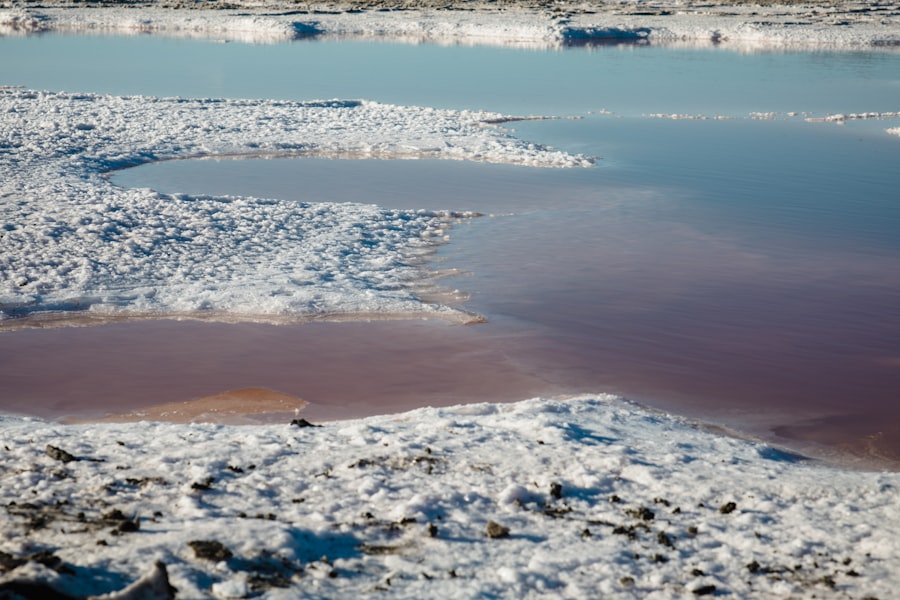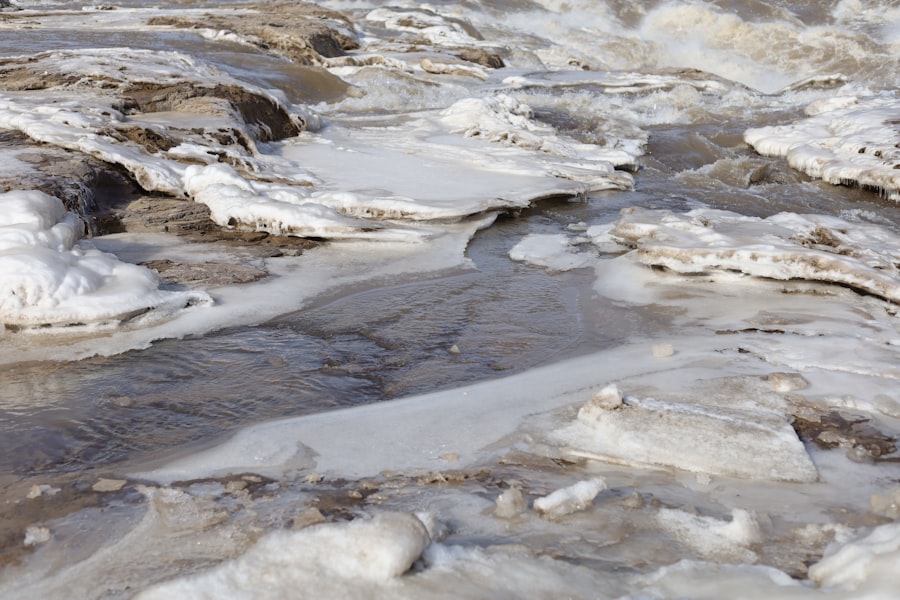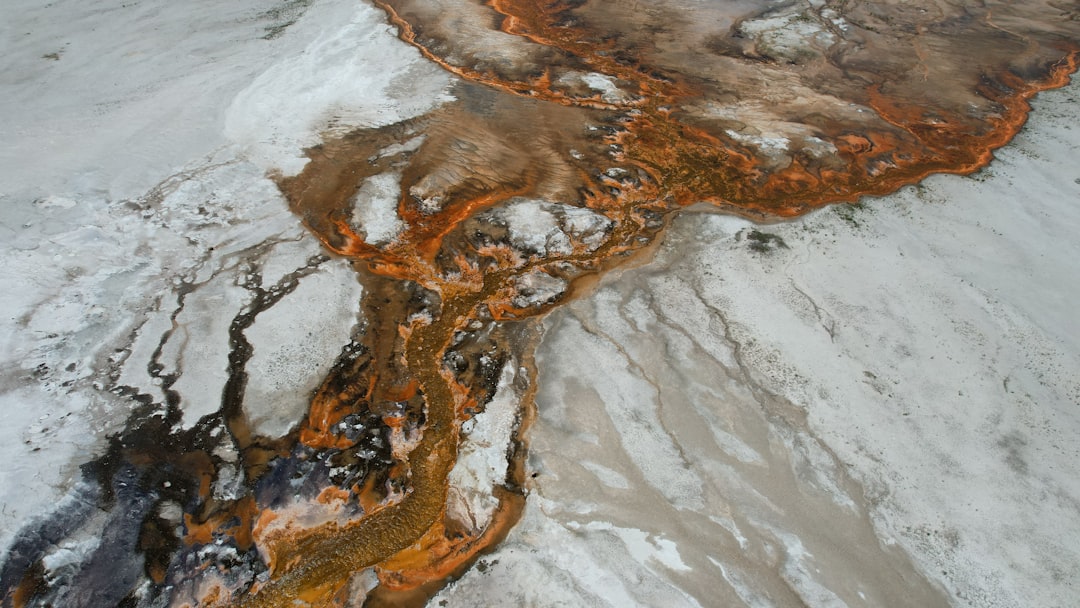As you delve into the complexities of environmental science, one of the most pressing issues that emerges is the contamination of the Greenland Ice Sheet. This vast expanse of ice, which plays a crucial role in regulating global sea levels and climate patterns, is increasingly threatened by various pollutants. The Greenland Ice Sheet is not just a frozen landscape; it is a vital component of the Earth’s climate system.
Understanding the factors contributing to its contamination is essential for grasping the broader implications for our planet. The contamination of the Greenland Ice Sheet is a multifaceted issue that encompasses both local and global dimensions. As you explore this topic, you will uncover how human activities, industrial processes, and climate change are interlinked in a complex web of environmental degradation.
The ice sheet, once seen as a pristine wilderness, is now a barometer for the health of our planet, reflecting the consequences of pollution and climate change.
Key Takeaways
- The Greenland Ice Sheet is facing contamination from various sources, posing a threat to the environment, wildlife, and human health.
- Pollution on the Greenland Ice Sheet is impacting the ecosystem and wildlife, with long-term consequences for the environment.
- Contaminants in the Greenland Ice Sheet come from both local and global sources, including industrial activities, transportation, and atmospheric deposition.
- The presence of contaminants in the ice sheet has adverse effects on the environment and wildlife, leading to bioaccumulation and ecosystem disruption.
- Climate change is exacerbating ice sheet contamination, leading to increased melting and release of pollutants, further impacting the environment and human health.
The Impact of Pollution on the Greenland Ice Sheet
Pollution has far-reaching effects on the Greenland Ice Sheet, influencing not only its physical structure but also its ability to function as a climate regulator. As you consider the implications of contaminants, you will find that they can accelerate melting processes, leading to increased sea-level rise. The presence of black carbon, for instance, darkens the ice surface, reducing its albedo effect and causing it to absorb more heat from the sun.
This phenomenon can create a feedback loop that exacerbates melting and further contributes to global warming. Moreover, the impact of pollution extends beyond mere physical changes. The introduction of heavy metals and persistent organic pollutants into the ice sheet can alter its chemical composition, affecting the ecosystems that depend on it.
As you reflect on these changes, it becomes clear that the contamination of the Greenland Ice Sheet poses a significant threat not only to local wildlife but also to global climate stability. The interconnectedness of these systems highlights the urgency of addressing pollution in this fragile environment.
Sources of Contamination in the Greenland Ice Sheet

Understanding the sources of contamination in the Greenland Ice Sheet is crucial for developing effective mitigation strategies. You may be surprised to learn that pollutants can originate from both local and distant sources. Local activities, such as mining and industrial operations, contribute directly to the contamination of nearby ice.
However, pollutants can also travel vast distances through atmospheric currents, with emissions from industrialized nations settling on the ice sheet. One significant source of contamination is black carbon emitted from fossil fuel combustion and biomass burning. As you explore this topic further, you will discover that even seemingly distant activities can have profound effects on the ice sheet.
For instance, pollutants from Europe and North America can be transported across the Atlantic Ocean, eventually depositing on Greenland’s surface. This transboundary pollution complicates efforts to address contamination, as it requires international cooperation and comprehensive policy responses.
Effects of Contaminants on the Environment and Wildlife
| Contaminant | Effect on Environment | Effect on Wildlife |
|---|---|---|
| Heavy Metals | Soil and water pollution | Accumulation in tissues |
| Oil Spills | Marine ecosystem damage | Coating of feathers and fur |
| Pesticides | Contamination of food chain | Reproductive issues |
| Plastics | Ocean pollution | Ingestion and entanglement |
The effects of contaminants on the environment and wildlife in Greenland are alarming and multifaceted. As you investigate this issue, you will find that pollutants can disrupt ecosystems and threaten biodiversity. For example, heavy metals such as mercury can accumulate in the food chain, posing risks to species that rely on fish and marine mammals for sustenance.
This bioaccumulation can have dire consequences for both wildlife and indigenous communities that depend on these resources for their livelihoods. Additionally, contaminants can alter habitat conditions, making it increasingly difficult for species to thrive. As you consider the implications for wildlife, think about how changes in ice cover and water quality can affect migratory patterns and breeding success.
The delicate balance of these ecosystems is being disrupted by pollution, leading to declines in populations and shifts in species distributions. The interconnectedness of these systems underscores the importance of addressing contamination not only for wildlife but also for human communities that share this environment.
The Role of Climate Change in Exacerbating Ice Sheet Contamination
Climate change plays a pivotal role in exacerbating contamination issues within the Greenland Ice Sheet. As temperatures rise, you will notice that melting ice exposes previously trapped pollutants, releasing them into the environment. This process creates a vicious cycle where increased melting leads to higher concentrations of contaminants in both ice and surrounding ecosystems.
The warming climate also influences precipitation patterns, which can affect how pollutants are deposited onto the ice sheet. Furthermore, as you explore this relationship between climate change and contamination, consider how changing weather patterns can lead to more extreme events such as storms and flooding. These events can mobilize contaminants from land into waterways that feed into the ice sheet, further complicating efforts to manage pollution.
The interplay between climate change and contamination highlights the urgent need for comprehensive strategies that address both issues simultaneously.
The Human Health Risks Associated with Ice Sheet Contamination

The contamination of the Greenland Ice Sheet poses significant human health risks that cannot be overlooked. As you examine this aspect, consider how pollutants such as heavy metals and persistent organic pollutants can enter human food systems through traditional hunting and fishing practices. Indigenous communities in Greenland rely heavily on marine resources for their diets, making them particularly vulnerable to the effects of contamination.
Moreover, as contaminants accumulate in the food chain, they can lead to serious health issues such as neurological disorders and reproductive problems. As you reflect on these risks, think about how they disproportionately affect marginalized communities who may have limited access to alternative food sources or healthcare options.
Efforts to Monitor and Mitigate Ice Sheet Contamination
Efforts to monitor and mitigate contamination in the Greenland Ice Sheet are essential for safeguarding both the environment and human health. As you explore these initiatives, you will find that scientists are employing advanced technologies such as satellite imagery and remote sensing to track changes in ice cover and pollutant levels. These tools enable researchers to gather critical data that informs policy decisions and conservation strategies.
In addition to monitoring efforts, various organizations are working collaboratively to develop mitigation strategies aimed at reducing pollution sources. You may find it encouraging that international partnerships are forming to address transboundary pollution issues. These collaborative efforts highlight a growing recognition of the need for collective action in tackling environmental challenges that transcend national borders.
International Cooperation and Policy Responses to Ice Sheet Contamination
International cooperation is vital in addressing the complex issue of ice sheet contamination. As you consider this aspect, think about how global agreements such as the Stockholm Convention on Persistent Organic Pollutants aim to reduce harmful substances that affect not only Greenland but also other vulnerable regions worldwide. These agreements facilitate collaboration among nations to share knowledge, resources, and best practices for managing pollution.
Moreover, policy responses must be adaptive and responsive to emerging scientific findings regarding contamination levels and their impacts. As you reflect on this need for dynamic policy frameworks, consider how local communities can be engaged in decision-making processes to ensure their voices are heard. Empowering indigenous populations to participate in environmental governance is crucial for developing effective strategies that respect traditional knowledge while addressing contemporary challenges.
The Economic and Social Consequences of Ice Sheet Contamination
The economic and social consequences of ice sheet contamination are profound and far-reaching. As you explore this topic further, consider how pollution can impact industries such as fishing and tourism that rely on a healthy environment. Contaminated waters may lead to declines in fish populations or render certain areas unsafe for recreational activities, ultimately affecting local economies dependent on these resources.
Additionally, social consequences arise from health risks associated with contaminated food sources. As you think about these implications, reflect on how economic disparities may exacerbate vulnerabilities among communities most affected by pollution. Addressing these economic and social challenges requires a multifaceted approach that considers both environmental sustainability and social equity.
The Importance of Preserving the Greenland Ice Sheet
Preserving the Greenland Ice Sheet is not merely an environmental concern; it is a matter of global significance. As you contemplate its importance, recognize that this massive ice body serves as a critical buffer against rising sea levels and climate change impacts worldwide. Protecting it is essential for maintaining global climate stability and safeguarding coastal communities around the world.
Moreover, preserving the Greenland Ice Sheet is vital for maintaining biodiversity and protecting unique ecosystems that have evolved over millennia. As you reflect on this interconnectedness between climate stability and ecological health, consider how efforts to protect this region can have cascading benefits for both local communities and global populations alike.
Addressing the Looming Environmental Crisis
In conclusion, addressing the looming environmental crisis posed by Greenland Ice Sheet contamination requires urgent action at multiple levels—local, national, and international. As you reflect on this pressing issue, consider how your understanding can contribute to advocacy efforts aimed at raising awareness about pollution’s impacts on this vital ecosystem. By fostering collaboration among scientists, policymakers, indigenous communities, and global citizens, we can work together toward sustainable solutions that protect not only Greenland but also our shared planet.
The time has come for collective action against pollution and climate change—two intertwined challenges that threaten our future. By prioritizing research, monitoring efforts, and international cooperation, we can strive toward a healthier environment for generations to come. Your engagement in this dialogue is crucial; together we can address this environmental crisis head-on and ensure a sustainable future for all living beings on Earth.
The Greenland ice sheet, a critical component of the global climate system, is facing increasing threats from contamination due to industrial pollutants and climate change. This contamination not only accelerates ice melt but also poses significant risks to the local ecosystems and global sea levels. For a deeper understanding of the implications of this issue, you can explore a related article on the topic by visiting this page. This article delves into the various sources of contamination and their potential long-term impacts on the environment.
WATCH THIS! Greenland’s Ice Is Hiding A Nuclear Time Bomb
FAQs
What is the Greenland ice sheet contamination?
The Greenland ice sheet contamination refers to the presence of pollutants and chemicals in the ice sheet, which can have negative impacts on the environment and human health.
What are the sources of contamination in the Greenland ice sheet?
Contamination in the Greenland ice sheet can come from various sources, including industrial emissions, transportation, and long-range transport of pollutants from other regions.
What are the potential impacts of contamination in the Greenland ice sheet?
Contamination in the Greenland ice sheet can lead to the release of pollutants into the environment as the ice melts, affecting ecosystems and human health. It can also contribute to global environmental issues such as climate change.
How is contamination in the Greenland ice sheet being monitored and studied?
Scientists use various methods, such as ice core analysis and remote sensing, to monitor and study contamination in the Greenland ice sheet. This helps to understand the extent of the issue and its potential impacts.
What measures are being taken to address contamination in the Greenland ice sheet?
Efforts are being made to reduce emissions of pollutants and chemicals that contribute to contamination in the Greenland ice sheet. International agreements and regulations also aim to address the issue on a global scale.
